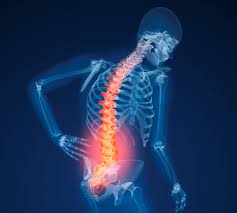As we discussed last week, scientists have many different theories about pain and the best ways to get control of your pain. One popular idea is called the pain gate control theory. The pain gate control theory states that “gates” allow certain sensations to pass along paths to your brain. The ones that don’t make you feel pain, pass through the “pain gate” and then help close the gate so the pain cannot reach your brain. This week we are going to discuss ways to help manage the pain.
Ways to Address Pain
Controlling pain is a billion-dollar healthcare industry, and it is estimated that over 20% of American adults are living with chronic pain. You should work with your physician on what is the best technique for you. Here are a few techniques that are fairly easy to try:
- Transcutaneous Electrical Nerve Stimulation (TENS)
There are certain stimuli used to create non-noxious signals to close the gate. The most popular of these is called transcutaneous electrical nerve stimulation, or TENS. It is often used by healthcare professionals to help patients get control of their pain, and it uses the gate theory to accomplish this task. To use TENS, small electrodes are applied to your body. These electrodes are attached to a TENS unit via a small wire, and an electrical impulse is then applied to the electrodes. This impulse is usually felt as a slight tingling sensation. Sometimes, the electricity makes your muscles in the area of the electrodes gently contract and relax.
The tingling sensations of the TENS pass through the gate and are experienced as a pleasant feeling. When this happens, the “gate” in the neural pathway closes, and painful stimuli are prevented from reaching the brain and being felt. The studies surrounding the use of TENS show mixed results. Some studies show good pain control with TENS, while others show very little improvement in pain. These small units are widely available at drugstores and on-line, with prices varying depending on features and size.
- Movement
Although it can seem that movement can cause pain, gentle exercises and movement; walking, stretching, gentle yoga, chair yoga, Tai Chi actually keep muscles strong, joints moving and help to release endorphins, chemicals that our nervous system produces, which can help to “close the gate” and reduce the perception of pain. These days, many classes are taught on-line or can even be found on YouTube.
- Heat and Cold
Muscle guarding or tightening can be a protective pain response. Unfortunately, this can actually increase pain. Heat can help us to relax our muscles. Hot packs, heating pads, warm baths, all are useful. Cold can help to reduce the inflammatory response. Cold pack, or ice applied directly to a sore area can help to block the pain and “close the gate.”
- Massage
Gentle massage can help to relax muscles and increase blood flow. There are many types of massage. Massage can focus on certain parts of the body, like the back, and do not require you to remove clothing if that makes you uncomfortable. Self-massage, gently rubbing the painful area and combining that with other techniques can also help “close the gate.”
Pain Science and Research
The pain gate control theory is just that—a theory. And theories need to be tested and challenged with science. Since the feeling of pain is so subjective, testing it can be a challenge.
Keep in mind that the way you experience pain is very personal and is made up of all your life’s experiences combined with your fears, expectations, and, of course, any sort of physical injury or insult to your body’s tissues. This means that your particular pain control method may work for you while it is useless for another person.
Working with your physician to find the best method to control your pain is recommended.
Submitted by Katesel Strimbeck PT, MS, MHA. Katesel has been a PT for 22 years, she is Director of Rehabilitation Services at North Country Hospital, and a member of the American Physical Therapy Association.
Reference: Sears, B., (December 2019). The Pain Gait Control Therapy. Verywell health. Retrieved from: https://www.verywellhealth.com/the-pain-gate-control-theory-4587360


